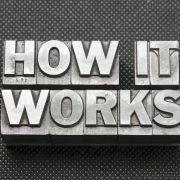Self-Employed and Gig-Economy Workers: Here’s How to Take Charge of Your Retirement
When it comes to retirement savings, independents, freelancers and ‘gig economy’ workers are falling behind. According to a recent survey from mutual fund company T. Rowe Price, only about half of independent workers surveyed – 56% – said they were actively saving money for retirement. That’s a dismal showing compared to traditional “W-2” employees – 72% of whom were actively socking away retirement savings.
Of course, traditional employees generally have the advantage of access to a company-sponsored retirement plan, 401(k) matches, etc. In contrast, only 21% of independent workers said they had access to an employer-sponsored retirement plan.
Independent workers also face some additional costs: They have to pay Social Security taxes on income from self-employment. They don’t get sick days or paid holidays. And they have to pay all of their own health insurance costs. So, it’s understandable that retirement savings frequently gets squeezed out of the budget for more immediate concerns.
However, that failure to save will eventually catch up with the self-employed – and some of those costs will be societal.
If you’re self-employed, or a small business owner-operator, there are some things you can do:
Open a Self-Directed IRA.
IRA stands for “Individual Retirement Arrangement.” The name should provide a clue: Your employer isn’t going to set this up for you. It’s an individual’s responsibility to take the initiative to set up and fund these accounts.
There are two types: The Traditional IRA allows you to take an up-front tax deduction on contributions – provided your income is below the cap. That lowers your taxable income, allowing you to contribute more. The money grows tax deferred as long as it’s in the traditional IRA. You pay income taxes on withdrawals.
You have to start taking required minimum distributions (RMDs) beginning April 1st of the year after the year in which you turn age 72. So, the tax deferral doesn’t last forever.
The deduction for contributions is “above-the-line,” meaning that if you meet the income requirements, you can take the deduction even if you don’t itemize. That’s great news for middle class workers!
If you earn too much to qualify for the up-front tax deduction, you can still benefit: Any money in the account still grows tax-deferred into retirement.
The Roth IRA works the opposite way: Contributions are after-tax, meaning there’s no up-front tax deduction. But the money grows tax-free as long as it’s in the account at least five years. And anything you take out in income in retirement is generally tax-free. Further, there’s no RMDs with a Roth. The money can compound tax-free as long as you live. Income limits apply.
There’s a 10% early withdrawal penalty if you’re under age 59½, in most circumstances. With traditional IRAs it applies to the whole withdrawal. With Roth IRAs it only applies to gains (as long as the money’s been “parked” in the Roth IRA for at least five years).
However, there are a number of exceptions to the early withdrawal penalty. If you need money for a down payment on a home as a first-time homeowner, or to pay for college costs, if you’re disabled or need the money to avoid foreclosure or eviction, the IRS will waive the penalty, though you may have to pay income taxes.
So, if you can spare the cash to contribute, there’s no reason not to. It’s still available for many types of emergencies.
Both are very easy to set up, and as of 2020, you can fund any combination of IRAs with up to $6,000 per year ($500 per month), or $7,000 per year if you’re age 50 or older.
If you want to do ‘self-directed’ IRA investing into things like real estate, precious metals, closely held corporations, LLCs and other non-standard or alternative asset classes, both types of IRAs will support that. Not all investment companies can support that. Contact American IRA, LLC for more information.
Establish a Simplified Employee Pension Plan (SEP)
If you want to contribute even more, you can also establish a simplified Employee Pension Plan (SEP). This plan allows you to stash away up to 25% of your income – up to $57,000 per year for 2020 – into a special kind of IRA. You don’t pay taxes on any money you contribute. Once the money is in the account, it grows tax-deferred until retirement.
The same 10% penalty applies on distributions from your SEP before you reach age 59 ½, and the same RMD requirements exist as for a traditional IRA. There are no additional “catch-up contribution” limits available in SEPs.
Note: If you have employees, you have to contribute to their accounts, too, if they work enough. You can’t set up a SEP for yourself and exclude your employees. However, for independent workers, the SEP can be a terrific solution.
SEPs also allow for Self-Directed IRA investing. Contact American IRA, LLC for details on how to use your SEP IRA to invest in non-standard or alternative asset classes.
Establish a SIMPLE IRA
For those with employees, a SIMPLE IRA (Savings Incentive Match Plan for Employees) may be a great option. It functions as a stripped-down, simplified 401(k) plan for businesses with 100 employees or fewer.
Employees, including yourself, can contribute up to $13,500 per year as of 2020. Those age 50 and over can contribute another $3,000. As the employer, you have to match them:
Option 1: Pay a flat 2% of their income whether they make any contributions or not
Option 2: Provide a dollar-for-dollar match on the first 3% of your employees’ income.
Employers may reduce the 3% match, but not below 1% or for more than two years out of five.
If you don’t have employees, you don’t have to match any contributions besides your own.
Like the other plans, SIMPLE IRAs can also support self-directed retirement investing, though not every investment company or retirement plan custodian will work with you. American IRA, LLC will, though. In fact, we specialize in helping people leverage the powerful tax advantages of retirement accounts, combined with self-directed investing.
Solo 401(k)s
These are great options if you have substantial capacity to contribute, and you plan not to have any full-time employees besides yourself and your spouse. It’s similar to a standard 401(k), but has powerful benefits for business owners, since they can contribute tax-deferred money both as an employer and an employee. This is true whether you are self-employed or whether you are technically the employee of your own corporation, though the total maximum contribution numbers are a little different because of the effects of self-employment taxes on self-employed workers.
As of 2020, if you own your own corporation or LLC and you’re an employee of that business entity, you can contribute as follows:
- Elective deferrals up to 100% of compensation (“earned income” in the case of a self-employed individual) up to the annual contribution limit:
- $19,500 in 2020, or $26,000 in 2020 if age 50 or over; plus
- Employer nonelective contributions up to:
- Up to 25% of your income, depending upon the structure of your company.
Contribution limits for self-employed individuals
If you’re self-employed, as opposed to the owner-employee of your own corporation or LLC, you must make a special computation to figure the maximum amount of elective deferrals and nonelective contributions you can make for yourself. When figuring the contribution, compensation is your “earned income,” which is defined as net earnings from self-employment after deducting both:
- one-half of your self-employment tax, and
- contributions for yourself.
Use the rate table or worksheets in Chapter 5 of IRS Publication 560, Retirement Plans for Small Business, for figuring your allowable contribution rate and tax deduction for your 401(k) plan contributions. See also Calculating Your Own Retirement Plan Contribution.
Again, solo 401(k) plans will support Self-Directed IRA investing. They are particularly suited for anyone interested in real estate investing within their solo 401(k), because they are generally not subject to unrelated debt-financed income tax, which can apply when investors use borrowed money to make investments within their retirement accounts.
You may qualify for a tax credit if you set up a SEP, SIMPLE or 401(k) plan for your small business. This can help you offset any costs associated with establishing the plan.
Get Started Now.
The most important thing for self-employed and gig economy workers is to get started now. Don’t put it off: Because there are annual caps on what you can contribute, it is very difficult to make up for lost time.
Interested in learning more about Self-Directed IRAs? Contact American IRA, LLC at 866-7500-IRA (472) for a free consultation. Download our free guides or visit us online at www.AmericanIRA.com.






